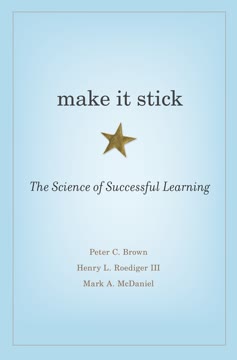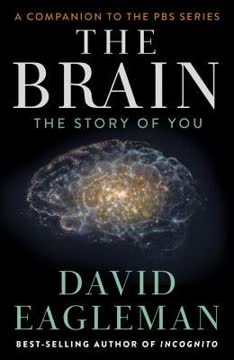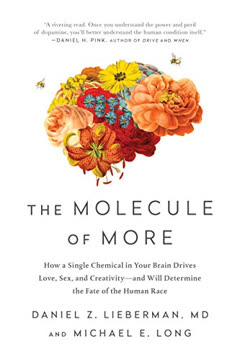Key Takeaways
1. Glia: The Other 85% of the Brain
"To appreciate the implications of Dr. Diamond's findings, it is important to understand some basic facts about glia and to consider the origins of our current view of the way the brain works."
Glia outnumber neurons. Contrary to popular belief, neurons make up only 15% of brain cells. The remaining 85% consists of glial cells, long overlooked as mere support cells for neurons. Recent research has revealed that glia play crucial roles in brain function, development, and disease.
Types of glial cells:
- Astrocytes: Star-shaped cells that regulate neurotransmitters and support neurons
- Oligodendrocytes: Cells that produce myelin in the central nervous system
- Microglia: The brain's immune cells
- Schwann cells: Myelinating cells in the peripheral nervous system
Paradigm shift. The discovery of glia's importance is revolutionizing our understanding of the brain, challenging the neuron-centric view that has dominated neuroscience for over a century. This new perspective is opening up novel avenues for research and potential treatments for various neurological and psychiatric disorders.
2. Astrocytes: The Versatile Stars of the Brain
"Astrocytes are everywhere in the brain and spinal cord, but they are not present in the nerves of the peripheral nervous system."
Multifaceted functions. Astrocytes, named for their star-like shape, perform a wide range of essential tasks in the brain:
- Regulate neurotransmitter levels at synapses
- Control blood flow to neurons
- Maintain the blood-brain barrier
- Provide energy to neurons
- Respond to injury and disease
Calcium signaling. Astrocytes communicate through waves of calcium ions, allowing them to coordinate activities across large areas of the brain. This form of communication is slower than neuronal signaling but enables astrocytes to influence brain function on a broader scale.
Synaptic plasticity. Recent research has shown that astrocytes can modulate synaptic strength and even participate in the formation and elimination of synapses. This involvement in synaptic plasticity suggests a crucial role for astrocytes in learning and memory processes.
3. Oligodendrocytes: Myelination and Brain Evolution
"Vertebrates have myelin-forming glia; invertebrates do not. The evolution of this amazing glial contribution to nervous system function could not have had more profound consequences."
Myelination revolution. Oligodendrocytes produce myelin, the insulating sheath around axons that enables rapid impulse conduction. This evolutionary innovation allowed vertebrates to develop more complex nervous systems and larger brains.
Efficiency and miniaturization:
- Myelinated axons conduct signals up to 100 times faster than unmyelinated ones
- Myelination allows for smaller diameter axons, enabling more compact neural circuits
- This efficiency permitted the development of the complex human brain
Beyond insulation. Recent research suggests that oligodendrocytes do more than just provide insulation:
- They support axon metabolism
- Regulate ion concentrations around axons
- Participate in plasticity and learning processes
4. Microglia: The Brain's Immune System
"Microglia are the key to understanding this new view of the brain. There is little or no information available about these cells to nonscientists, so we can begin our inquiry with about as much knowledge as the pioneering scientists who discovered these various odd brain cells."
Immune sentinels. Microglia are the brain's resident immune cells, constantly surveying the environment for threats:
- Respond rapidly to injury or infection
- Engulf damaged cells and debris
- Release inflammatory molecules to combat pathogens
Beyond immunity. Recent research has revealed additional roles for microglia:
- Pruning synapses during brain development
- Participating in learning and memory processes
- Potential involvement in neurodegenerative diseases
Double-edged sword. While crucial for brain health, overactive microglia can contribute to chronic inflammation and neurodegeneration. Understanding and modulating microglial activity is a promising avenue for treating various brain disorders.
5. Schwann Cells: Peripheral Nervous System Support
"Schwann cells coat the nerve fibers all along their length right up to the point where the nerve enters the spinal cord or brain, but they do not cross that threshold."
Myelination in the PNS. Schwann cells are the glial cells of the peripheral nervous system, providing insulation and support to peripheral nerves:
- Myelinate larger axons to enable rapid signal conduction
- Envelop smaller axons in groups, providing protection and metabolic support
Injury response. Schwann cells play a crucial role in peripheral nerve regeneration:
- Dedifferentiate and proliferate after injury
- Guide regenerating axons back to their targets
- Remyelinate regenerated axons
Versatility. Schwann cells demonstrate remarkable plasticity:
- Can transform between myelinating and non-myelinating phenotypes
- Participate in immune responses and pain signaling
- Potential targets for treating peripheral neuropathies and chronic pain
6. Glia in Brain Development and Plasticity
"Nature has revealed for the first time in history a secret long hidden. You feel a sense of gratitude and fellowship with the many scientists across space and time who labored to bring you to this new insight into Nature."
Developmental scaffold. Glial cells play crucial roles in brain development:
- Radial glia guide migrating neurons to their proper locations
- Astrocytes promote synapse formation and maturation
- Oligodendrocytes myelinate axons, fine-tuning neural circuits
Plasticity mediators. Glia are increasingly recognized as key players in brain plasticity:
- Astrocytes regulate synaptic strength and remodeling
- Microglia prune unnecessary synapses
- Oligodendrocytes modify myelin to influence signal timing and learning
Critical periods. Glial cells, particularly astrocytes and oligodendrocytes, are involved in opening and closing critical periods for learning:
- Astrocyte-derived factors promote plasticity in young brains
- Myelin-associated proteins limit plasticity in adult brains, stabilizing neural circuits
7. Glial Involvement in Neurodegenerative Diseases
"Alzheimer's disease destroys neurons and communication pathways in the brain. Certain parts of the brain are more vulnerable than others, notably those brain regions controlling thinking (cerebral cortex), memory (hippocampus), and fear, emotion, and aggression (amygdala)."
Beyond neurons. Neurodegenerative diseases involve more than just neuronal death:
- Alzheimer's disease: Astrocytes and microglia contribute to amyloid plaque formation
- Parkinson's disease: Astrocyte dysfunction may contribute to dopamine neuron loss
- ALS: Altered astrocyte-motor neuron interactions play a role in disease progression
Inflammation and oxidative stress. Glial cells mediate neuroinflammation and oxidative stress in neurodegenerative diseases:
- Microglia release pro-inflammatory factors
- Astrocytes lose their neuroprotective functions
- Oligodendrocytes become vulnerable to oxidative damage
Therapeutic targets. Understanding glial involvement in neurodegeneration opens new avenues for treatment:
- Modulating microglial activation to reduce inflammation
- Enhancing astrocyte neuroprotective functions
- Supporting oligodendrocyte health to maintain myelin integrity
8. The Role of Glia in Mental Health and Addiction
"Schizophrenia is a disease that affects perception and undermines the part of our brain that knows what is real and what is not."
Glial abnormalities in psychiatric disorders:
- Schizophrenia: Reduced numbers of oligodendrocytes and altered white matter integrity
- Depression: Decreased astrocyte density in certain brain regions
- Anxiety: Altered microglial activation patterns
Addiction and glia. Glial cells play unexpected roles in drug addiction:
- Astrocytes modulate synaptic plasticity in reward circuits
- Microglia contribute to neuroinflammation associated with chronic drug use
- Oligodendrocytes may be involved in drug-induced white matter changes
Therapeutic implications. Targeting glial cells could lead to new treatments for mental health disorders and addiction:
- Enhancing astrocyte function to improve mood regulation
- Modulating microglial activation to reduce neuroinflammation
- Supporting oligodendrocyte health to maintain proper neural connectivity
9. Glia in Pain Perception and Management
"Pain rules our life. Nothing approaches the power of pain in motivating behavior."
Beyond neurons. Glia play crucial roles in pain perception and chronification:
- Astrocytes and microglia become activated in response to nerve injury
- Glial activation leads to the release of pro-inflammatory factors that sensitize neurons
- Chronic pain states involve persistent glial activation
Neuropathic pain. Glial involvement is particularly important in neuropathic pain:
- Microglia initiate and maintain central sensitization
- Astrocytes contribute to altered neurotransmitter uptake and release
- Schwann cells in the periphery can become sources of pain signals
Novel treatments. Understanding glial involvement in pain opens new therapeutic possibilities:
- Drugs targeting glial activation to reduce chronic pain
- Modulating glial neurotransmitter uptake to enhance existing pain medications
- Harnessing the potential of glial-derived factors for pain relief
10. Glial Influence on Sleep, Memory, and Consciousness
"It is astonishing to think that the same nerve cell that began processing the barrage of bewildering information you experienced that day you were born will still be processing information in your brain eighty years later."
Sleep regulation. Glial cells, particularly astrocytes, are involved in sleep-wake cycles:
- Release of gliotransmitters influences neuronal activity during sleep
- Astrocytic calcium waves coordinate slow-wave sleep oscillations
- Glial clearance of metabolic waste is enhanced during sleep
Memory formation. Glia participate in memory processes:
- Astrocytes modulate synaptic plasticity in the hippocampus
- Microglia prune unnecessary synapses, refining memory circuits
- Oligodendrocytes fine-tune signal timing through myelin plasticity
Consciousness and cognition. Emerging evidence suggests glial involvement in higher cognitive functions:
- Astrocytes may contribute to the integration of information across brain regions
- Glial calcium waves could play a role in coordinating large-scale brain activity
- The glial network might provide a substrate for aspects of consciousness
Last updated:
FAQ
What's The Other Brain about?
- Exploration of Glial Cells: The book focuses on glial cells, which constitute about 85% of the brain's cellular makeup, challenging the neuron-centric view of brain function.
- Mental Health Impact: It explores how glial cells are involved in mental health issues like schizophrenia and depression, suggesting new treatment possibilities.
- Revolutionizing Neuroscience: R. Douglas Fields presents discoveries that reshape our understanding of the brain, emphasizing glial cells as active participants in brain processes.
Why should I read The Other Brain?
- Cutting-Edge Research: The book offers insights into the latest neuroscience research, particularly on often-overlooked glial cells.
- Practical Implications: Understanding glial function has significant implications for treating neurological diseases and mental health disorders.
- Engaging Narrative: Fields combines scientific rigor with storytelling, making complex concepts accessible and engaging.
What are the key takeaways of The Other Brain?
- Glia's Crucial Role: Glial cells are essential for brain function, influencing memory, mental health, and cognitive processes.
- Neurons vs. Glia: The book challenges the neuron-centric view, showing that glia are integral to brain activity.
- Future of Neuroscience: Fields suggests future research will focus more on glia, potentially leading to breakthroughs in understanding brain disorders.
What are the best quotes from The Other Brain and what do they mean?
- “Glia do not fire electrical impulses...”: This highlights the historical oversight in neuroscience, where glial cells were dismissed due to their lack of electrical activity.
- “The discovery of glia—the other brain...”: This emphasizes the transformative potential of recognizing glial cells as active participants in brain function.
- “The other brain, operating entirely outside our conscious mind...”: This encapsulates the book's thesis, highlighting glial cells' crucial yet overlooked role.
What are glial cells and why are they important?
- Types of Glial Cells: Glial cells include astrocytes, oligodendrocytes, Schwann cells, and microglia, each with distinct functions.
- Support and Protection: They provide structural support, maintain homeostasis, and protect neurons, playing a vital role in brain health.
- Involvement in Disease: Glial cells are implicated in neurological disorders, indicating they are active participants in brain pathology.
How do glial cells contribute to mental health according to The Other Brain?
- Silent Partners in Mental Illness: Glial cells are involved in conditions like depression and schizophrenia, playing a role in underlying mechanisms.
- Neuroinflammation: Glial cells can become reactive, leading to neuroinflammation linked to mental health issues.
- Potential for New Treatments: Understanding glial function could lead to novel therapeutic approaches targeting these cells.
How do glial cells interact with neurons according to The Other Brain?
- Communication Pathways: Glial cells communicate with neurons through signaling molecules, influencing neuronal activity.
- Support Functions: They provide metabolic support, maintain the extracellular environment, and clear excess neurotransmitters.
- Regulatory Role: Glial cells modulate synaptic transmission and plasticity, affecting learning and memory processes.
What role do glial cells play in neurological diseases as discussed in The Other Brain?
- Neuroinflammation: Activated glial cells contribute to neuroinflammation, implicated in disorders like Alzheimer’s and multiple sclerosis.
- Neuroprotection vs. Neurotoxicity: Glial cells can protect neurons or contribute to damage, depending on the context.
- Potential Therapeutic Targets: Targeting glial cells could be a novel approach for treating neurological diseases.
How do glial cells contribute to memory and learning in The Other Brain?
- Role in Synaptic Plasticity: Glial cells influence synaptic strength and plasticity, essential for memory formation.
- Calcium Signaling: Calcium waves in astrocytes modulate neuronal activity, affecting learning processes.
- Myelination and Learning: Myelination, facilitated by oligodendrocytes, is linked to learning efficiency and cognitive performance.
What is the significance of astrocytes in The Other Brain?
- Dynamic Cellular Behavior: Astrocytes actively participate in brain function, changing shape and function in response to activity.
- Regulation of Neurotransmitters: They release gliotransmitters that modulate synaptic transmission, challenging their traditional view as support cells.
- Implications for Mental Health: Dysfunction in astrocytic activity can contribute to mental health disorders.
How does The Other Brain challenge traditional neuroscience views?
- Glia as Active Participants: The book argues that glial cells are active participants in brain function, challenging the neuron-centric view.
- Interconnectedness of Neurons and Glia: Fields emphasizes the importance of understanding neuron-glia interactions for a complete understanding of brain function.
- Revising Research Priorities: The author calls for a shift in research priorities to include glial biology, potentially reshaping neuroscience.
What future directions does The Other Brain suggest for neuroscience research?
- Investigating Glial Diversity: More research is needed into the various types of glial cells and their specific functions.
- Exploring Glial Plasticity: Studying how glial cells adapt and change in response to experience could have implications for learning and memory.
- Understanding Glial Involvement in Diseases: Investigating glial dysfunction in neurological diseases could lead to new therapeutic strategies.
Review Summary
The Other Brain receives mostly positive reviews for its fascinating exploration of glial cells and their crucial role in brain function. Readers appreciate Fields' ability to make complex neuroscience accessible, though some find the writing style repetitive or overly technical. Many reviewers highlight the book's potential to revolutionize understanding of brain disorders and treatments. Some criticize the occasional use of sensationalism or meandering narratives. Overall, readers find the book informative and thought-provoking, praising its contribution to neuroscience while acknowledging its challenges for non-expert readers.
Similar Books










Download PDF
Download EPUB
.epub digital book format is ideal for reading ebooks on phones, tablets, and e-readers.




